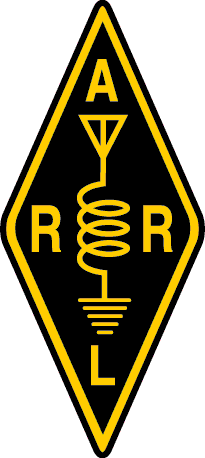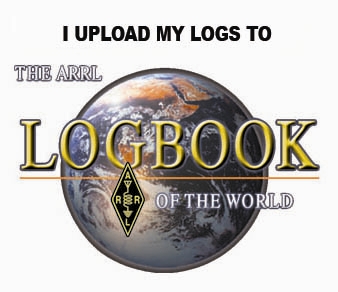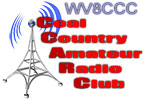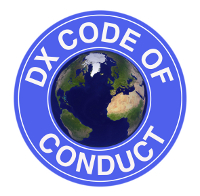DX Propagation
DX Code of Conduct
- I will listen, and listen, and then listen again before calling.
- I will only call if I can copy the DX station properly.
- I will not trust the DX cluster and will be sure of the DX station’s call sign before calling.
- I will not interfere with the DX station nor anyone calling and will never tune up on the DX frequency or in the QSX slot.
- I will wait for the DX station to end a contact before I call.
- I will always send my full call sign.
- I will call and then listen for a reasonable interval.
- I will not call continuously.
- I will not transmit when the DX operator calls another call sign, not mine.
- I will not transmit when the DX station requests geographic areas other than mine.
- When the DX operator calls me, I will not repeat my call sign unless I think he has copied it incorrectly.
- I will be thankful if and when I do make a contact.
- I will respect my fellow hams and conduct myself so as to earn their respect.
Dang near everything affects radio wave propagation. You can place a lamp in front of a wireless 2.4Ghz router for your WiFi and cause different areas of your house to have poor connectivity. If you think something doesn’t affect your connection, you’re probably wrong. There’s so much data used to determine proper radio wave propagation, one page on my site doesn’t do it justice. I am going to work on compiling all of the links and resources to information that I can from all of the websites I study in order to give an comprehensive guide to the normal user when it comes to HF propagation. I am not currently interested in any other type of radio comms, with the exception of local 2m chatter. Therefore, as I learn, I will pass along what I have learned to anyone reading this site.
Until I get the information compiled, here are some links to some really good band propagation websites. These sites are very informative and do a really good job of explaining the ins and outs of monitoring the variables for radio wave propagation.
1) N0NBH – This site does a wonderful job of teaching the reader all about radio propagation. From VLF to EHF, he takes the time to go through everything that affects propagation due to solar, x-ray, weather, etc.
Here is a great Propagation Primer from N0NBH. It is available on his website as well.
21 July 2014: I just discovered http://websdr.ewi.utwente.nl:8901/ which is a Software Defined Radio (SDR) and is located in Europe.. This radio, via the web interface, will allow up to 255 users to SIMULTANEOUSLY tune to different frequencies. This rig was primarily setup to work the Numbers Stations (google link) but it will work for anything from DC to 30Mhz, USB, LSB, etc. It is very user friendly for those familiar with HF radio. One side benefit for this would be to be able to monitor your own broadcasts on a particular frequency from your home QTH to Europe. I haven’t tried this yet, but I am very anxious to do so this evening.
Here’s a basic guide to begin DX-ing from “Ham Radio for Dummies”:
Delving into DX-ing
Pushing your station to make contacts over greater and greater distances (DX means distant stations) is the second oldest activity in all of ham radio. Somewhere out in the ether, a station is always just tantalizingly out of reach and the challenge of contacting that station is the purpose of DX-ing.
Thousands of hams across the continents and around the world like nothing better than to make contacts (QSOs) with someone far away. These hams seem to ignore all nearby stations. Their logs are filled with exotic locations. Ask them about some odd bit of geography and you are likely to find that they not only know where it is, but some of its political history and the call sign of at least one ham operator there. These hams are DXers.
Today, intercontinental contacts on the HF frequencies traditionally considered to be the shortwave bands are common but still thrilling. Cross-continental contacts on VHF and UHF once thought impossible are made in increasing numbers. Because the sun and the seasons are always changing, each day you spend DX-ing is a little (and sometimes a lot) different. Sure, you can log on to an Internet chat room or send e-mail around the world, but, like fishing, logging a QSO in the log, mastering the vagaries of the ionosphere, and getting through to a distant station is a real accomplishment non-hams can never know.
Before starting out, you need to know that even if you have a very modest home or mobile HF station, you can work DX. Skill and knowledge compensate for a great deal of disparity in equipment. Nowhere is this concept more true than in hunting the elusive DX. The first skill to learn is not how to transmit, but how to listen.
When working DX, in all cases, start at the bottom of the band or as close as your license privileges permit. The best DX tends to collect there. Stop at each signal along the way, even those that sound like casual contacts, to determine who is on the air. Listen for obvious accents and signals with a curious, hollow, or fluttery sound.
Signals coming from far away have to make several hops off the ionosphere — sometimes as many as five or six! — to get to your antenna. These hops divide the signal into multiple paths that have slightly different travel times. The paths interfere with each other as they arrive at your antenna, smearing the signal out in time and making its strength change rapidly. Learn to recognize that sound because, for sure, it means DX is at hand!
Program the popular DX frequencies into your rig’s memory for easy access.
Keep tuning and listening, noting what you hear and at what times. When DX-ing, experience with the characteristics of a band’s propagation is the best teacher. Try to detect a pattern when signals from the different population centers appear and how the seasons affect propagation on the different bands. Soon you recognize the signals of regulars on the band, too. As usual, the key is to listen, listen, listen.
Daytime DX-ing
You must account for the fluctuations in the ionosphere when you’re DX-ing. Depending on the hour, the ionosphere either absorbs a signal or reflects it over the horizon. In the daytime, the 20, 17, 15, 12, and 10-meter bands, called the High Bands, tend to be “open” (support propagation) to DX stations. Before daylight, signals begin to appear from the east, beginning with 20-meters and progressing to the higher bands over a few hours. After sunset, the signals linger from the south and west for several hours with the highest frequency bands closing first in reverse order. Daytime DXers tend to follow the Maximum Useable Frequency (MUF), the highest signal the ionosphere reflects. These reflections are at a very low angle and so can travel the longest distance for a single reflection (one reflection is called a hop)and have the highest signal strengths.
Nighttime DX-ing
From 30-meters down in frequency are the nighttime bands of 30, 40, 60, 80, and 160-meters, known as the Low Bands. These bands are throttled during the daytime hours by absorption in the lower layers of the ionosphere. After the sun begins to set, these bands start to come alive. First, 30, 40, and 60-meters may open in late afternoon and stay open somewhat after sunrise. 80 and 160-meters, however, make fairly rapid transitions around dawn and dusk. Signals between stations operating on 80 and 160-meters often exhibit a short (15 to 30 minute) peak in signal strength when the easternmost stations are close to sunrise. This is known as the dawn enhancement. This time is good for stations with modest equipment to be on the air and take advantage of the stronger signals on these more difficult DX bands.
160-meters is known as Top Band because it has the longest wavelength of any current amateur band. This long wavelength requires larger antennas. Add in more atmospheric noise than at higher frequencies and you have a challenging situation. That’s why some of the most experienced DXers love Top Band DX-ing. Imagine trying to receive a 1 kilowatt broadcast station halfway around the world. That’s what the Top Band DXer is after! As difficult as this task sounds, many of the top DXers have managed it.
Contacting a DX station
Making a call to a DX station requires a little more attention to the clarity of your speech and sending than making a call to a nearby ham. Remember: Your signal likely has the same qualities as the DX station — hollow or fluttery and weak — so speak and send extra carefully. Give the DX station’s call sign using the same phonetics they are using and then repeat yours at least twice, using standard phonetics. On Morse code contacts, send the DX station’s call sign once and your call sign two or three times at a speed matching that of the DX station.
DX contacts, except when signals are quite strong, tend to be shorter than contacts with nearby stations. When signals are very weak or a station very rare, a contact may consist of nothing more than a confirmation that you each have the call signs correct and a signal report. To confirm the contact, both you and the DX station must get each other’s call signs correct. To do that, use standard phonetics (on voice transmissions), speak clearly, and enunciate each word. New hams often don’t realize that multiple hops and skips around the world have a pretty dramatic effect on speech intelligibility, none of it for the better. Speak relatively slowly, don’t slur your words or mumble, and keep your transmissions short.
When it’s time to conclude the contact, you need to let the other station know if you will be sending a QSL card to confirm that the contact occurred. Collecting these cards is a wonderful part of the hobby.
YOU DON’T NEED TO SHOUT INTO THE MICROPHONE! Shouting doesn’t make you any louder at the other end! By adjusting your microphone gain and speech processor, you can create a very understandable signal at normal voice levels. Your contacts and family will thank you for doing so. Save the shouting for celebrating your latest DX contact!
If you call and call and can’t get through or if the stations you contact ask for a lot of repeats and fills(in other words, if they often ask you to repeat yourself), you probably have poor audio quality. Have a nearby friend, such as a club member, meet you on the air when the bands are quiet and do some audio testing. Check to see if you have hum or noise on your audio. Noise is often the result of a broken microphone cable connection, either in the microphone itself or at the radio connector. You may not be able to tell you have a problem from the radio’s power meter output, so an on-the-air check is necessary to find it. Inexpensive, old, and non-communications microphones (such as computer microphones) often have poor fidelity. If your on-the-air friend says you sound like a bus station PA system, upgrade to a better microphone!
And here’s some great tips from ARRL.org regarding DX and pileups:





